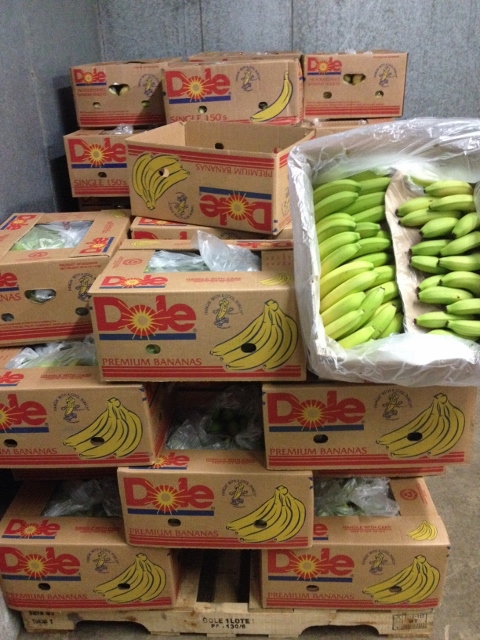saveourplanetearth.com
Call us: (775) 831-1331
A Day in the Life of a Banana
Walking into a grocery store, most of the time we forget to be amazed at the vast array of products we find there, especially since little of it is grown or produced here on the mountain where we live.
I ran into Ron Stanger, owner of the Village Market in Incline Village at a social gathering a few months ago and told him I was interested in tracing bananas from his store all the way back to the plantation where they are grown.
A grocery store may buy produce directly from the company who grows it, but often has to rely on distributors who carry a variety of products, have warehousing facilities and transportation capabilities.
When Ron needs bananas for his store, one local distributor he may order from is Bonanza Produce, located in Reno, Nevada. Bonanza Produce provides food items to stores, restaurants and other businesses throughout Northern and Central Nevada, Northeastern California and as far south as the Mammoth area.
A distributor doesn’t just supply the products, the company needs to be able to store produce at the proper temperature — many products require refrigeration or freezing; a distributor also provides transportation —picking up produce at loading docks in Long Beach and Los Angeles, California, where ships come in bringing fresh produce from Mexico and Central America.
Retailers and wholesalers currently are affected by the months-long dock strike occurring along West Coast ports. Massive vessels sit idly off shore, waiting for a turn to dock and be unloaded. Limited operations are creating a backlog, forcing ships to wait and preventing them from returning to their home ports to pick up and deliver more products.
The banana begins its journey to your table here in the West from a plantation in Guatemala, Honduras, Ecuador, Panama, Costa Rica or Mexico. The banana is a berry growing on what is commonly called a banana tree, but which is actually an herbaceous plant, or herb.
Bananas are not propagated by seed, rather by transplanting part of the stem, creating a new plant from an existing one. It takes the new plant one year to reach maturity; the fruit takes an additional three months to reach the harvest point.
The fruit is harvested by bananeros in the field while green, hard and completely unripe. The bunches, called “hands”, are lopped off with a machete and attached to a cable system which brings the bunches to the processing facility on the farm where they undergo numerous steps before being packaged into boxes and loaded on temperature-controlled containers for transportation to the nearest port, either by truck or train.
The bananas remain in a temperature-controlled environment for their 7-10 day journey by ship to the West Coast ports in Southern California where they are offloaded, still in refrigerated containers which are closely monitored, awaiting pick up by distributors such as Bonanza Produce in Reno or General Produce in Sacramento.
The bananas are not yet ready for consumption, however — they must still be ripened at the distributor’s facilities by a process called “gassing”.
The chilling bananas undergo on their way to their final destination essentially puts them into a state of dormancy, and gassing, along with warming to 60-62 degrees, from the 56-58 degrees maintained during transportation, kick starts the ripening process so that they are nearly ready to eat when delivered to local grocery stores.
The bananas are put into pressurized chambers, boxes stacked in a way to facilitate air flow and ethylene gas, a natural hormone the plants already produce, is ejected into the chamber. This process takes 2-3 days.
Now the bananas are ready for delivery to stores, restaurants, schools and other businesses, where they will continue to ripen until ready for eating.
Fun Facts from chiquitabananas.com:
• Most bananas are grown within 20 degrees of the equator
Most bananas are grown within 20 degrees of the equator
• A banana plant reaches its full height of 15-30 feet in one year
A banana plant reaches its full height of 15-30 feet in one year
• The trunk of the banana plant is made up of tightly overlapping leaves
The trunk of the banana plant is made up of tightly overlapping leaves
• The average American eats 27 pounds of bananas per year
The average American eats 27 pounds of bananas per year
• Bananas contain 6 major vitamin groups
Bananas contain 6 major vitamin groups
Find informative videos detailing the growing, harvesting, transporting and ripening processes as well as recipes on the Dole and Chiquita websites.
Taking into account the amount of handling required in transporting bananas from Central America to Lake Tahoe and the nutritional value packed into a piece of fruit weighing a few ounces, the banana is a bargain that can be had for about 25 cents.
Banana cartons, optimally stacked to facilitate air flow
Courtesy of Christopher Mills
Director of Sales, Bonanza Produce



